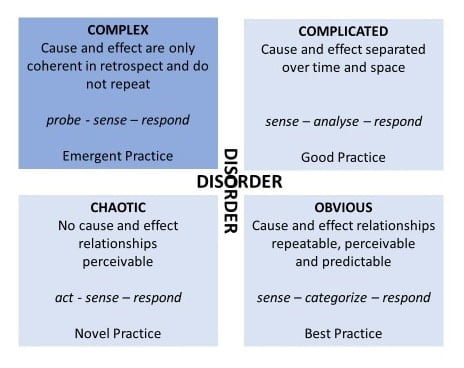Are You Future Fit? Life- changing Tips On Innovating & Future Foresight For Business Leaders

During this crisis a good question you might reflect on is What does the future require of business leaders and how can I ensure I am fit for it?
As a leadership coach and a former leader of my own business, I am well aware that leadership, like life, is an on-going journey of growth and personal development. So, the question I am asking myself is how can I help leaders to ensure that they are future fit?
Let’s explore for a moment the future context that we are getting fit for.

You may well have heard people say that we are living in a VUCA world. What does that mean? It stands for volatility, uncertainty, complexity and ambiguity. It is an acronym coined by the US military to describe the world after the Cold War and has been applied to the business world since the financial crisis of 2008. The current pandemic we are living through is a VUCA world challenge and this sort of challenge is not going to go away.
As a result of VUCA world challenges and the level of disruption we are seeing, organizations are struggling. The average life span of an S&P 500 company used to be 60 years; it is now 17 years. Many organizations are in survival mode.
Are we as leaders up to the sort of challenges our organizations are now facing? The answer would probably be ‘no’. There is a clear development gap between what the future requires of leaders and the sort of leadership we are currently able to provide.
Our 20th century model of leadership was heroic and individualistic. Leaders were seen as super-heroes. They were expected to have all the answers and to create predictability. They focussed on the last and the next quarter’s results.
The 21st century world is too complex and changing too fast for one individual to be the place of leadership. We need collaborative and collective leadership at all levels throughout the organization. Leaders need to pay attention to 3 time horizons – business as usual, innovating for tomorrow and future foresight about what is coming over the horizon from the future.

How do we develop from where we are now as leaders to meet these VUCA world requirements of us?
Where am I now?
The first step is to get clear on where you are now. In this section I will share with you two models, the Cynefin model developed by David Snowden and shown in the diagram and Dr Robert Kegan’s Theory of Adult Development.
When I was on an agile leadership training course, I came across the Cynefin model and it really helped me to see the journey that I had been coaching many of my clients to make. I will explain it here in the hope that it helps you to make sense of your leadership journey, to identify where you are now and how you need to develop as a leader so that you are fit to lead yourself and others through VUCA world challenges.

Obvious
At the bottom right of the model is the obvious box. Here cause and effect are clear and once the situation has been categorised the leader can follow best practice. Leaders who are comfortable here have what Robert Kegan describes as a ‘socialized mind’. These leaders are externally referenced in that their behaviour is influenced by outside circumstances and the expectations of others and they depend on outside validation for their self-esteem. They have ambition and drive for personal success and are ego-centric, but their definition of success is not their own. I have coached many of these leaders who eventually realise that they are living second-hand lives in order to please others.
They value safety which they try to achieve by controlling everything tightly. However, because they fear falling short of others’ expectations and being disapproved of by others, they rarely achieve that safety. Due to their dependence on others they often feel powerless and as a result get frustrated and angry, which they blame on others. They are reactive and go into stress response, limiting their effectiveness. They are very loyal to people, organizations and ideas and can work very hard for a cause they believe in, but they lack flexibility in adapting these ideas or their behaviours when needed.
75% of leaders operate at this stage of development (a further 5% are at the pre socialized mind stage). They are not far enough along their leadership development journey to be able to lead in the complexity we now face. They are very uncomfortable when they find themselves in a place of not knowing and uncertainty.
Even if you are not in this box yourself you will undoubtedly know leaders who are.
Complicated
Top right of the diagram is the Complicated box. Here cause and effect are only able to be determined by getting an expert/using your own expertise to define the situation and then agree on what good practice looks like. It is akin to a medical doctor examining a patient with breathing problems to identify whether it is due to the Corona Virus or to some other cause. Once the diagnosis is made the doctor can follow good practice for that diagnosis.
Leaders who are comfortable operating in this box are referred to by Robert Kegan as ‘self-authored’. They have moved on from wanting to meet the expectations of others and are now much more internally referenced. They are curious about themselves and want to get clarity on who they are, what they think and believe and what they want. As a result, they get to know who they are and what they stand for and are no longer dependent on outside validation for self-worth. They have a vision for the future, clear values and act in alignment with their vision and values. They have their own view of what success looks like and trust their own judgment. They are no longer run by fear and instead of reacting they choose how to respond in stressful situations. They have more of a future focus than leaders with a socialized mind and they believe that it is their purpose to create the future in service of organisational/team success.
If you are at this stage of development chances are that you act with integrity, are approachable and skilled at working with people, you listen well, build high performing teams, mentor and develop capability in others and empower them.
15% of leaders are ‘self-authored’ and organizations appreciate them. They are capable of coping with a certain level of complexity and it may be that organizations believe that this is as good as it gets. However, they are not capable of leading amidst the level of complexity we are moving towards.
Complex
This takes us to the Complex box in the top left of the model. Here cause and effect are not clear. The chances are you find yourself in a situation that you have never experienced before and can neither rely on your experience nor your expertise. Most people find this place of not knowing and uncertainty very uncomfortable and it puts them into stress response so that they want to get away from it and turn it into something that they do know how to do. This is the place where agile approaches come into play. Where the team collectively decides what they want to experiment with first. They implement, get the feedback, amplify what works and dampen what doesn’t. Action is taken in short, iterative sprints, collectively learning as they go.
The 5% of leaders who are comfortable in this complex space are referred to by Robert Kegan as having a’ self-transforming mind’. They can see and hold the whole system and become the architect and servant of an emergent future that is beneficial for all. Self-transforming leaders are aware that we are all interconnected. Covid 19 has made us all aware of our global interconnectedness. We may have thought it didn’t matter to us what happened to someone on the other side of the globe. We now know better
Complex Story
I was working with a leadership team who believed that they were already agile and able to operate in this complex box. When we put them through an unexpected disruption, they were all (but one of them who nobody listened to) hijacked by their emotions and went into stress response. They all looked to the CEO to decide what to do. She was not comfortable in this space either so she decided they would all leave the training room and go to another part of the hotel to have a management meeting which they did know how to do and felt comfortable with.
Leaders with this mindset can cope with the problems that make up complex challenges. They can hold multiple thoughts and ideas at once and can hold opposites in tension without reacting to resolve them quickly. They can hold conflicting visions of the future within a diverse set of stakeholders without championing one over the other.
Individual leadership is not effective here as no one person is smart enough. What is required is collective intelligence and systemic wisdom in order to create breakthrough thinking. Leaders are comfortable with not knowing and they use wisdom and intuition as they learn their way forward together.
As leaders develop into this self-transforming mind, they not only see the wider system in which they operate but they also see themselves as a system with many different dimensions. They accept their different selves without judgment and bring them into play as appropriate.
‘You cannot connect the dots looking forward; you can only connect them looking backward. So, youhave to trust that the dots will somehow connect in your future. You have to trust in something – your gut, destiny, life, karma, whatever. This approach has never let me down, and it has made all the difference in my life.’
Steve Jobs at Stanford University in 2005
Chaos
Clearly only those with a self-transforming mind have any chance of coping with chaos.
Take a moment to reflect where you are now on your leadership development journey?
According to Kegan we all believe that we are at a higher stage than we actually are. Often, we are in transition between these stages and we may even be at different stages in different situations.
How do I develop to be future fit?
In this next section I will describe some of the secret weapons that will help you become future fit and move through these stages of development.
Move from reactive to responsive
If we are to be able to lead ourselves and others through the transformation involved in thriving in our complex world, we need to be able to manage our response to being taken out of our comfort zone. We need to get comfortable with discomfort.
Our automatic reaction to change is to go into shock, denial, anger, sadness. These emotions take over and if we don’t manage them, they take us automatically into stress response, where the executive function in our brain shuts down and we are unable to think clearly or make effective decisions.
Interrupting the Stress Response
I often coach leaders to interrupt the stress response. The first step is to notice your early warning signals – thoughts, emotions and bodily reactions such as a tightness in your stomach, sweaty hands, heart beating faster. Then you interrupt it before it takes hold by taking a deep breath into your belly. This gets you out of your head and into your body. If you do this often enough, you start to notice a 6-10 second gap in which you can choose how to respond. This rewires your brain over time and enables you to operate effectively in a complex situation. It keeps you out of fear and allows you to act with curiosity, compassion and courage.
Building up an awareness of your inner landscape is vital as your body is your radar; noticing the feelings in your body is part of the intelligence you need to navigate complex situations. To master this, you need to use your breath to slow down so that you can pay attention to what is going on in your body.
This level of self-awareness enables you to take back control of your inner world, step back and calm your emotions all of which are key to leading in a complex world.
Positivity and re-framing
Your thoughts frame the triumphs and tragedies of your life. That is because your thoughts and beliefs influence your feeling which influence your behaviours.
If you approach a situation with a negative mindset and with fear you will create a self-fulfilling prophecy about the outcomes you are likely to get. In this negative mindset you are most likely making excuses because they are the lies we tell ourselves when we are too afraid of the future. You may ask yourself questions that weaken you and make you feel powerless: –
- Why did this happen to me?
- Why do I always make a mess of things?
- Why does it seem as though everyone is out to get me?
If you re-frame the way you think about a situation you change your perception and create possibilities that didn’t exist before. This applies to the current crisis, we can re-frame it in order to see the opportunity in adversity. With a positive mindset you have faith, you don’t take no for an answer and you ask yourself questions which empower you: –
- What are the benefits of this situation?
- What’s the value in experiencing this setback?
- What am I missing here that might be of value?
- What’s the opportunity here that I could take advantage of?
- How can I turn things around and take advantage of this situation?
- How can this help me move forward in a better way?
As you grow by reframing a challenging situation positively new paths open up to you that may lead to breakthroughs that you weren’t expecting
Another reason a positive mindset is important as you develop as a leader is that positive thinking and emotions create dopamine, serotonin and oxytocin in the brain, the chemicals of positivity and happiness. Looking after yourself during the Corona Virus crisis by doing exercise, mindfulness and meditation will also help to create these positive brain chemicals. These chemicals make you feel good and ensure that you are putting out a positive vibe which will put your people into a positive state and enable them to function and perform through adversity and support you in exploiting the opportunities.
Creating Your Authentic Leadership Brand Workbook By Sue Coyne
Creator of The Effective Leadership Launcher™ and Author of Stop Doing Start Leading





